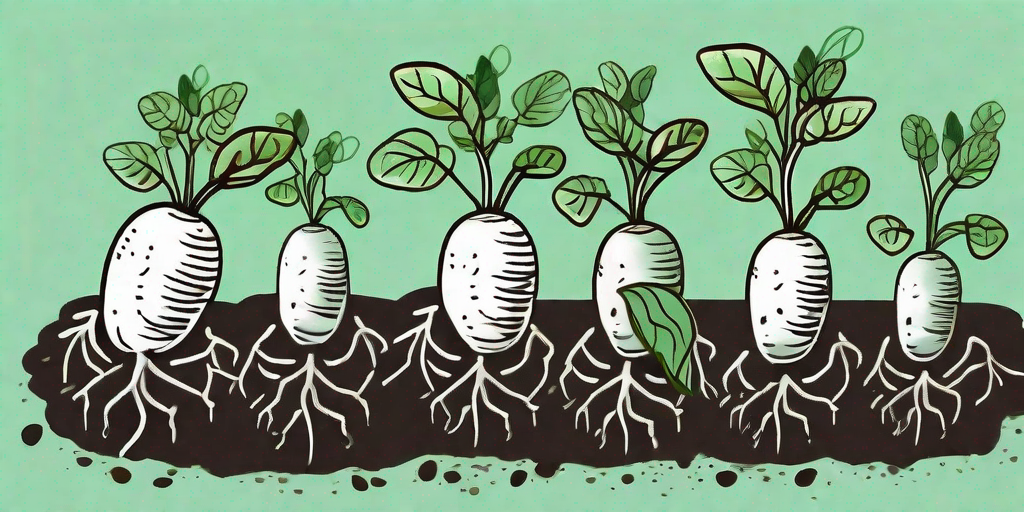
Welcome to the world of potato farming, where the humble spud reigns supreme! If you've ever fancied yourself a green thumb, or if you're just looking for a fun and rewarding new hobby, growing fingerling potatoes is a great place to start. These tiny tubers are not only delicious, but they're also surprisingly easy to grow. So, roll up your sleeves, grab your gardening gloves, and let's dig in!
What are Fingerling Potatoes?
Before we get our hands dirty, let's take a moment to appreciate the star of our show: the fingerling potato. Named for their small size and elongated shape (resembling a finger, hence the name), fingerlings are a type of potato known for their firm, waxy texture and rich, buttery flavor. They come in a variety of colors, from the traditional yellow and red to the more exotic blue and purple.
Unlike larger potato varieties, fingerlings are harvested when they're still young, which gives them their unique texture and flavor. They're a favorite among gourmet chefs and home cooks alike, and they're perfect for roasting, grilling, or adding to salads.
Getting Started: Choosing Your Potatoes
Now that we know what we're dealing with, it's time to choose your potatoes. When it comes to growing fingerlings, you have a few options. You can buy seed potatoes (which are just small potatoes that are ready to plant), or you can use potatoes that you've bought from the store. Just make sure they're organic, as non-organic potatoes are often treated with a sprout inhibitor.
When choosing your potatoes, look for ones that have at least a couple of 'eyes' (the little dents from which new plants will grow). The more eyes a potato has, the more plants it can produce. So, in the world of potato farming, it's all about the eyes!
Planting Your Potatoes
Step 1: Preparing the Soil
Like all plants, potatoes need good soil to grow. They prefer a loose, well-draining soil that's rich in organic matter. If your soil is heavy clay or sandy, you might need to amend it with some compost or well-rotted manure. Potatoes also like a slightly acidic soil, with a pH of around 6.0.
Before planting, prepare your soil by removing any weeds or rocks, and then dig a trench about 4 inches deep. If you're planting multiple rows of potatoes, make sure to leave about 3 feet between each row to give the plants plenty of room to grow.
Step 2: Planting the Potatoes
Once your soil is prepared, it's time to plant your potatoes. Place your seed potatoes in the trench, with the eyes facing up. The potatoes should be spaced about 12 inches apart. Once they're in place, cover them with about 3 inches of soil.
After planting, water your potatoes well. They need a good drink to get started! But be careful not to overwater, as this can cause the potatoes to rot. As a rule of thumb, the soil should be moist, but not soggy.
Caring for Your Potatoes
Now that your potatoes are planted, it's time to sit back and watch them grow. Well, not quite. While potatoes are relatively low-maintenance, they do require some care to ensure a good harvest.
Firstly, potatoes need a lot of sunlight, so make sure they're in a spot that gets at least 6 hours of sun a day. They also need regular watering, especially during dry spells. However, be careful not to overwater, as this can lead to problems like rot and disease.
As your potatoes grow, you'll need to 'hill' them by piling soil up around the base of the plants. This helps to prevent the potatoes from being exposed to sunlight, which can turn them green and make them inedible. Hilling also helps to increase the yield of your crop.
Harvesting Your Potatoes
After all your hard work, it's finally time to reap the rewards. Fingerling potatoes are usually ready to harvest about 2-3 weeks after the plants have flowered. To harvest, simply dig up the potatoes with a fork or your hands. Be careful not to damage the potatoes as you dig.
Once harvested, let your potatoes dry out for a few hours before storing them in a cool, dark place. Properly stored, your fingerling potatoes should last for several months.
Frequently Asked Questions
- Can I grow fingerling potatoes in a container?
Absolutely! In fact, growing potatoes in a container is a great option if you're short on space. Just make sure the container is deep enough for the potatoes to grow, and has good drainage.
- What's the best way to cook fingerling potatoes?
Fingerling potatoes are incredibly versatile and can be cooked in a variety of ways. They're delicious roasted, grilled, or boiled and added to salads. Their small size and thin skin mean they cook quickly and don't need to be peeled.
- Why are my potato plants turning yellow?
If your potato plants are turning yellow, it could be a sign of a problem. It might be that they're getting too much water, or it could be a sign of a disease like blight. If you're unsure, it's best to consult a gardening expert or your local extension service.
And there you have it, folks! From tiny taters to bountiful harvest, growing fingerling potatoes is a fun and rewarding journey. So why not give it a go? After all, as the old saying goes, 'The best time to plant a potato was 20 years ago. The second best time is now.' Happy gardening!











